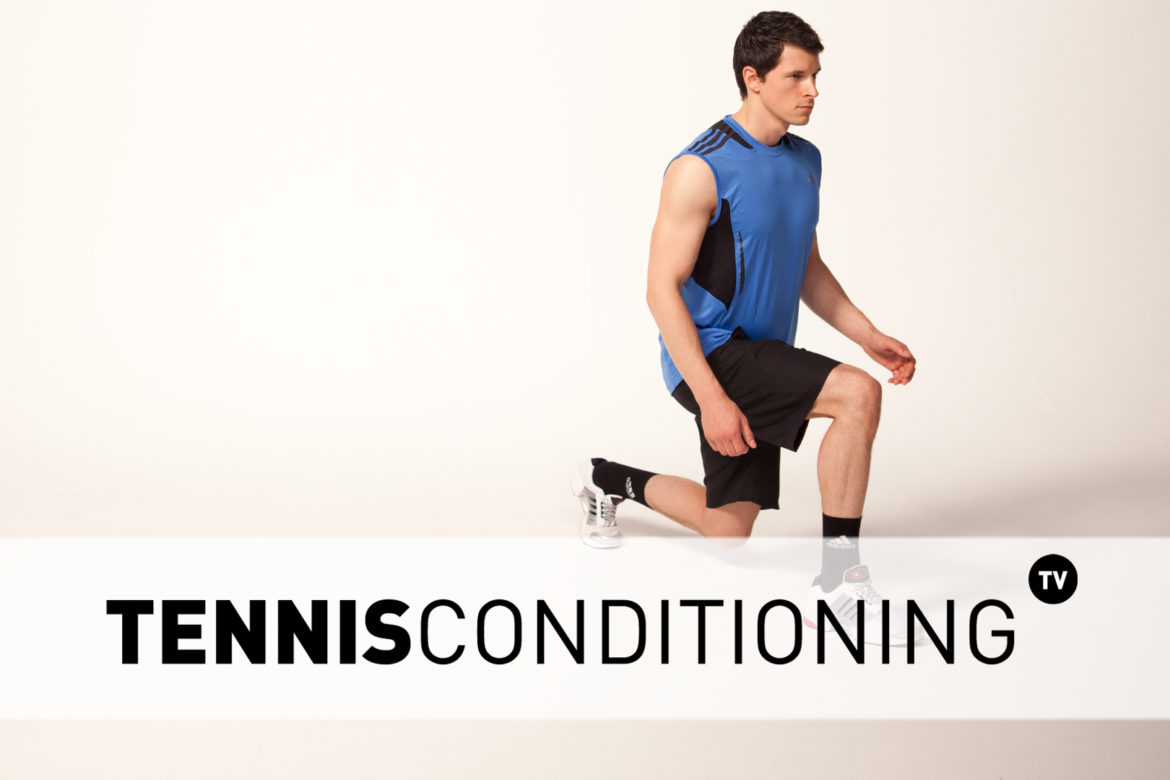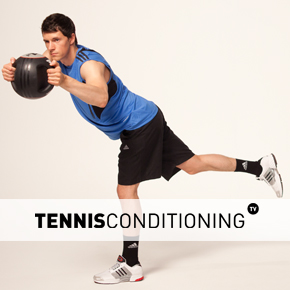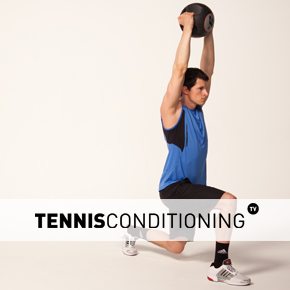The Side-Step to Diagonal Lunge is a calisthenic stability exercise for tennis players to improve dynamic stability, footwork, optimize power-production capabilities and flexibility.
The Side-Step to Diagonal Lunge is an entry-level calisthenic stability exercise. Therefore beginners can use it by to improve skill & balance foundations for more complex movements.
The Side-Step to Diagonal Lunge integrates the side-step footwork into the diagonal lunge position seen during closed-stance ground strokes and hence mimics movement patterns during ground stroke rallies.

Learn more about why having great dynamic balance is important and take a look at Tennis Champions: What Separates Them From The Rest?
Before you engage in stability training you may want to take a look at Medicine Ball Training: Strengthen Your Core & Enhance Stability for more exercises and a sample medicine ball workout for advanced athletes.
Side-Step to Diagonal Lunge Progression
If you use additional weights…make sure you use appropriate weight so you can control the action throughout the entire range of motion. Otherwise you defeat the purpose of the exercise.
Very often, people use too much resistance and they become sloppy. Especially when it comes to maintaining dynamic stability repetitively.
Also, don’t just progress with adding more weight. Instead maximize the speed and don’t look towards the ground while lunging but keep your head up and look forward. All while maintaining perfect form.
If that’s still too easy then keep your head up and track and object/person while lunging.
Here are the progression levels:
- Beginner: look down
- Advanced: look forward
- Professional: look forward & track an object/person
Side-Step to Diagonal Lunge Description

- Stand with feet close together
- Side-step to the left
- Step into diagonal lunge position with the right foot; push chest out and look forward;
- Return to “Ready Position”
- Side-step to the right
- Step into diagonal lunge position with the left foot; push chest out and look forward;
- Return to “Ready Position”
Related Balance Exercises
- 3 Way Single Leg Hand Reach
- Alternating Single Leg Med Ball Trunk Rotations
- Lunge Overhead MB Pull Over
Training Zone
We provide you with some more workouts and training tips you may be interested in to optimize your training.
Also, make sure that you warm up properly before and stretch out after your training session.




